The Anatomy of Writing: 4 Styles to Master the Blank Page

The scene is always the same.
You. A chair (a comfy one, we hope). A screen. And it: the blinking cursor. Blink. Blink. Blink. A rhythmic pulse that seems to mark the time of your procrastination. It's every creative's number one enemy, the metronome of imposter syndrome.
You know what you want to say. You have the idea, the concept, the brief. But the how escapes you. The words feel clumsy, the structure won't hold. The tone is wrong.
At this point, most online articles would serve you a bulleted list. They'd tell you there are four "official" writing styles: narrative, descriptive, expository, and persuasive. They'd give you a textbook definition and call it a day.
This is not one of those articles.
Today, we're not just defining the styles. We're inviting them to dinner. Think of your writing not as a monologue, but as a play. To make it work, you need the right characters. And your characters are the Styles.
The blank page isn't empty. It's a dark stage. It's time to turn on the lights.
You're about to meet the four protagonists who have, for centuries, decided the fate of every text, from the novel that kept you up all night to the email that convinced you to buy those shoes you didn't need.
Here they come.
The first act: Narrative Style (the Storyteller)
The first one to enter the stage makes a noise. He wears worn-out boots, has a map sticking out of his pocket, and the look of someone who's seen it all. He doesn't just walk; he advances.
It's Narrative Style.
It's the oldest, the most instinctive. It's the voice around the campfire, the start of every "Once upon a time." It's the backbone of every film, novel, joke, or anecdote you told your mates on Friday night.
What it is, technically
Narrative style is the art of telling a story. Its engine isn't information or opinion, but progression. It's based on key elements:
-
Plot: A sequence of events. There's a Beginning (equilibrium), a Middle (breaking the equilibrium, conflict), and an End (resolution, new equilibrium).
-
Characters: Agents who perform actions and suffer consequences.
-
Setting: The where and the when.
-
Conflict: The obstacle. Without conflict, there's no story. Just an account.
The goal of Narrative Style is to pull the reader into a journey. Its mantra is: "And then what happened?"
The Narrative Voice
If it could speak, Narrative would tell you:
“Enough with the definitions. Listen. Last year, I was stuck on a glacier in Patagonia. 100 km/h winds, the radio dead. I had two energy bars and a mate with a broken ankle. Night was falling. I had to choose: stay and freeze to death, or try to descend in the dark and die falling into a crevasse. I looked at my mate and said...”
See? He didn't explain the cold. He didn't describe the wind. He put a torn windcheater on you and asked, "OK, what would you do now?".
Real examples: Narrative in action
1. Fiction (the obvious example)
“The man in black fled across the desert, and the gunslinger followed.” — Stephen King, The Gunslinger
Boom. One sentence. We have two characters (the man in black, the gunslinger), a setting (the desert), and a conflict (a pursuit). We know nothing else, but we're already two miles down the motorway. This is pure narrative fuel.
2. Non-Fiction (the memoir)
“When I was five years old, I walked into my parents’ bedroom and saw my father pointing a gun at my mother’s head.” — Tara Westover, Educated
This isn't information. It's an explosion. You can't help but wonder what happened one second later. Westover uses a narrative structure (a specific event in time) to hook the reader on a theme that would otherwise be expository (her unconventional education).
3. Marketing & Business (Brand Storytelling) You're not selling software. You're selling the story of a founder who, frustrated by endless spreadsheets, decided to build a solution in his garage. Case Study: It's not a list of "features used." It's: "Client X was on the brink of failure (conflict). The marketing department hadn't slept in days (characters). Then, they implemented our solution (development). Six months later, revenue had increased by 300% (resolution)."
When to use it (and when not to)
Yes, of course, novels, screenplays, short stories. But also:
-
Your site's About Page (your story, not your CV).
-
Presentations and speeches (start with an anecdote, not the "About Me" slide).
-
Case Studies (turn them into hero's journeys).
-
Article intros (just like this one).
The common mistake: "Tolkien Syndrome" (with all due respect to the Prof). Getting lost in 100 pages of genealogy before anything happens. Narrative doesn't mean slow. It means every scene must move the plot forward. If an event changes nothing, cut it.

The second act: Descriptive Style (the Artist)
The second character doesn't enter. He's already there, in a corner, and no one had noticed. He's not looking at you; he's watching a speck of dust dancing in a sunbeam.
It's Descriptive Style.
If Narrative deals with movement through time, Descriptive deals with the suspension of time. It's an ultra-high-resolution photograph. It forces you to stop and feel.
What it is, technically
Descriptive style is the art of painting a picture with words. Its goal is sensory immersion. It doesn't care what happens; it cares how it feels while it's happening. It relies on:
-
Sensory language: Appealing to the five senses (sight, sound, smell, taste, touch).
-
Figurative language: Metaphors, similes, personification.
-
Evocative details: Not all the details, but the right ones. Not "the room was messy," but "on the wooden floor, there were three odd socks and a cold cup of coffee."
The goal of Descriptive Style is to evoke a mood, an atmosphere. Its mantra is: "Don't tell me, show me."
The Descriptive Voice
If it could speak, Descriptive would whisper:
“Don't say 'she was sad.' Tell me how the rain traced thin lines on the fogged-up glass, blurring with the crack in the corner. Make me feel the weight of the rough wool blanket on her knees and the sour smell of coffee forgotten on the table for hours. Let her sigh, but make me feel the air she's missing.”
Descriptive doesn't give you the emotion (sad); it gives you the physical ingredients so that you feel that emotion.
Real examples: Descriptive in action
1. Literature (The classic example)
"The sky above the port was the color of television, tuned to a dead channel." — William Gibson, Neuromancer
Gibson doesn't say "the sky was grey." That's information. He uses a powerful image (for its time) that evokes a specific grey: a static, cold, artificial, desolate grey. It's the definition of cyberpunk in one line.
2. Poetry (the pure form)
"La nebbia agli irti colli / piovigginando sale, / e sotto il maestrale / urla e biancheggia il mar." — Giosuè Carducci, San Martino
(Translation: "The fog on the steep hills / rises, drizzling, / and under the north-west wind / the sea screams and whitens.") Four lines, two senses (sight: fog, whitens; sound: screams), and an entire atmosphere. There's no plot. It's a painting.
3. Marketing & Copywriting ("Food Porn" and beyond) Descriptive reigns supreme here. Example (invented) for a perfume: "It's not a fragrance. It's the smell of clean sheets in a house by the sea, on an August afternoon. It's the salt on your skin, mixed with notes of ripe fig and wet wood." Example (invented) for a burger: "The toasted brioche bun, glistening with butter. The cheddar cheese melting slowly over the patty, its dark, crisp crust promising a juicy centre."
You're selling the experience, not the product.
When to use it (and when not to)
Yes, in poetry, literary fiction, travel diaries. But also:
-
Product Descriptions (e-commerce).
-
Restaurant Menus.
-
Branding (defining the "feel" of your brand).
-
Setting the tone at the beginning of a chapter or scene.
The common mistake: "Purple Prose." This is when writing becomes so ornate, so full of adjectives and adverbs, that it collapses under its own weight. It's "thesaurus syndrome." Descriptive is like salt: it enhances the flavour (the story), but if you overdo it, the dish becomes inedible.

The third act: Expository Style (the Professor)
The third character to enter doesn't evoke emotions. He is punctual. He has a tablet under his arm, clean-rimmed glasses, and a plan. He holds out his hand and introduces himself with his full name and title.
It's Expository Style.
It's the style of authority, clarity, and knowledge. It's the backbone of all non-fiction, investigative journalism, academic articles, and... yes, most blog posts.
What it is, technically
Expository style (from "to expose," meaning "to show" or "to lay bare") has one purpose: to inform, explain, define, or instruct. It doesn't try to tell a story (Narrative), evoke an emotion (Descriptive), or convince you (Persuasive). It just wants you to understand. It relies on:
-
Facts and logic: Data, statistics, definitions, citations.
-
Clear structure: This is the style that invented bullet points, checklists, and H2/H3s.
-
Sequence: Cause-and-effect, problem-solution, chronology, comparison.
-
Objective tone: (Ideally) there's no author's opinion. Just "how things are."
The goal of Expository Style is clarity. Its mantra is: "I'll explain how it works."
The Expository Voice
If it could speak, Expository would say:
“To optimise an article for SEO, you must follow three fundamental steps. First: identify the main keyword and related ones by analysing the SERP. Second: structure the article using H1, H2, and H3s that naturally include these keywords. Third: write a meta description no longer than 155 characters that encourages clicks. Let's start with the first point.”
It's clean. It's orderly. It's not sexy, but it's incredibly useful.
Real examples: Expository in action
1. Non-fiction (The Master)
“If you want to build a habit, the first step is to make it obvious. Many of the habits we follow each day are so automatic that we do not even realize they exist.” — James Clear, Atomic Habits
James Clear is the king of modern expository writing. Short sentences, one concept at a time, logical structure. He takes you by the hand and guides you through a complex process, making it simple.
2. "How-to" articles (the pillar of the web) This very article. "How to..." guides, cooking tutorials (without the 800-word story about grandma), technical product reviews. If you're learning something, you're reading expository writing.
3. Journalism and reporting A news article that answers the 5 Ws (Who, What, Where, When, Why). A company report on Q3 sales data. An IKEA instruction manual.
When to use it (and when not to)
Always, when the goal is to transfer knowledge:
-
Educational blog posts.
-
Guides and tutorials.
-
White Papers and reports.
-
Emails with instructions for a client or colleague.
-
Academic texts and manuals.
The common mistake: The "Wall of Text." The "Boring Professor." It's when expository is only expository. It becomes a grey, dense, impenetrable monolith. It lacks rhythm, air. Expository writing doesn't have to be boring. It can (and should) be livened up with metaphors (Descriptive) and anecdotes (Narrative) to keep the reader awake.

The fourth act: Persuasive Style (the Advocate)
The last character doesn't just enter: he walks right up to you. He looks you straight in the eye, shakes your hand with just the right amount of firmness, and pays you a sincere compliment on your work. You feel understood.
It's Persuasive Style.
He's charismatic, confident, and has an agenda. If Expository informs you, Persuasive convinces you. He wants to bring you over to his side. He wants you to change your mind, to feel something, and, above all, to do something.
What it is, technically
Persuasive style is the art of arguing to prompt action or change. It's a strategic cocktail of Aristotle's three pillars of rhetoric:
-
Logos (Logic): Uses facts, data, and reasoning (borrowed from Expository) to build a rational case.
-
Pathos (Emotion): Uses stories and evocative language (borrowed from Narrative and Descriptive) to strike the heart.
-
Ethos (Credibility): Demonstrates authority, expertise, and trustworthiness (why should you trust me?).
The goal of Persuasive Style is to influence. Its mantra is: "Here's why you should..."
The Persuasive Voice
If it could speak, Persuasive would say:
“I know what you're thinking. 'Writing is hard.' I get it; I've been there too. But imagine if you could sit down every morning and the words just flowed. Imagine finishing the day knowing you've written something powerful, something that connects, something that sells. It's not a dream. It's a skill, and I can teach you the exact method to unlock it. Start today.”
It showed you empathy (Pathos), established authority (Ethos), and offered you a logical solution (Logos) with a clear Call to Action.
Real examples: Persuasive in action
1. Copywriting & Sales (The Kingdom) Every landing page, every sales email, every ad. "Stop wasting time. Start optimising." "Over 10,000 creatives use our tool to save 8 hours a week. Do you want to be the one left behind?"
2. Opinion Writing (Editorials and Manifestos) An opinion piece in The Guardian that doesn't just describe a political problem, it argues for a specific solution. Seth Godin's "Marketing Manifesto."
3. Speeches (the oral form)
"I have a dream..." — Martin Luther King Jr.
This is perhaps the purest example of persuasion. MLK isn't describing a dream (well, technically he is, but that's not the point), he's not telling a story (though he uses anecdotes). He is arguing for a different future, using incredible pathos to push a nation to action.
When to use it (and when not to)
Everywhere there's a Call to Action (CTA):
-
Sales Pages and email marketing.
-
Proposals for a client (why they should choose you).
-
Opinion articles and manifestos.
-
Reviews (when you want to convince someone to buy or not to buy).
-
Motivational speeches.
The common mistake: The "Used Car Salesman" effect. Being pushy. When you overdose on Pathos (fake emotions) and are short on Logos (facts) or Ethos (credibility), you become manipulative. Honest persuasion is guidance; dishonest persuasion is deception.

The final act: The fifth element (the Alchemy)
The four characters are on stage. The Storyteller, the Artist, the Professor, and the Advocate. They look at each other.
The Narrative one says, "Your description is nice, but let's move on, I'm bored." The Descriptive one replies, "Your plot is great, but I feel nothing. It's cold." The Expository one interrupts, "You're both imprecise. These are the facts..." The Persuasive one concludes, "Well done everyone, but what's the point if people don't do anything?"
They're all right. And they're all wrong. Here's the truth that most manuals leave out: no writing style lives alone.
Mediocre writing relies on a single style. Professional writing is a blend. It's an orchestra.
The Pro's secret: The "Blend"
The real skill isn't in mastering one style, but in knowing how to mix them with purpose. The fifth, secret style is Alchemy.
Think about an article on this blog, when it works well:
-
It starts with a Narrative (the blinking cursor scene) to create empathy and hook you.
-
It uses an Expository structure (H2, H3, definitions, lists) to make the information clear and digestible.
-
It inserts Descriptive touches (the "characters on stage" metaphor, the smell of coffee) to keep the text vivid and prevent it from sounding like an IKEA manual.
-
It ends with a Persuasive tone (the Call to Action) to push you to reflect and apply these concepts.
Analysis of a perfect blend: Apple's storytelling
Take an iPhone launch.
-
Narrative: They tell the story of how this device will change your life, how it will let you capture memories (the child learning to ride a bike).
-
Descriptive: They linger on the tactile feel of "aerospace-grade titanium," the "matte glass," the click of the new button.
-
Expository: They show you the spec sheet. The A18 Bionic chip. The 48 megapixels. The facts that justify the price.
-
Persuasive: "The best iPhone ever. Your next iPhone." (The CTA is implicit: buy it).
If they only used Expository, it would be a spec sheet for engineers. If they only used Descriptive, it would be a poem about a piece of metal. If they only used Persuasive, it would sound empty.
The blend creates the magic.

Conclusion: Your stage, your direction
The blank page is still there. But it's not dark anymore. On the stage are your four actors. The Storyteller hands you a compass. The Artist hands you a paintbrush. The Professor hands you a map. The Advocate points to the audience.
You are the director now.
Stop asking, "What's my writing style?". It's the wrong question. Ask yourself:
-
What is the goal of this piece? (Persuasive)
-
What is the clearest way to explain my point? (Expository)
-
What story can I tell to create a connection? (Narrative)
-
What sensory details can I use to make it memorable? (Descriptive)
Styles aren't cages to lock yourself in. They are tools in your toolbox. Sometimes you'll need a hammer, sometimes a precision screwdriver. Most of the time, you'll need both.
Now, stop staring at the cursor. Raise the curtain. And start writing.
The Toolbox
Here are the practical takeaways to save:
-
Narrative Style (The Storyteller): Use it to hook the reader and create a journey. Mantra: "And then what happened?"
-
Descriptive Style (The Artist): Use it to create atmosphere and sensory immersion. Mantra: "Don't tell me, show me."
-
Expository Style (The Professor): Use it to inform, explain, and provide structure. Mantra: "I'll explain how it works."
-
Persuasive Style (The Advocate): Use it to convince and drive to action. Mantra: "Here's why you should..."
-
The Blend (The Alchemist): The real secret. Don't pick one style; use them all. Start a story (Narrative) to introduce a fact (Expository), colour it (Descriptive), and close with a CTA (Persuasive).
The analysis is over; now it's your turn. The first step to improving is recognising your habits. Which style do you use most? And which one, instead, do you find the most difficult?
Tell us about your experience in the comments below. And if you have a piece of writing you're stuck on and don't know which "voice" to use, contact us here. We at Insight live for turning empty stages into sold-out shows.
By accepting you will be accessing a service provided by a third-party external to https://insightadv.uk/

 IT
IT  EN
EN 
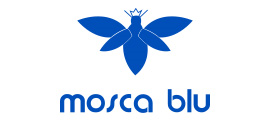
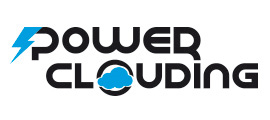

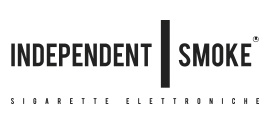

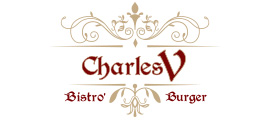

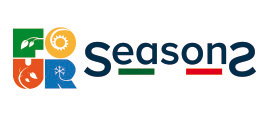

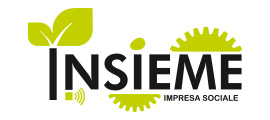

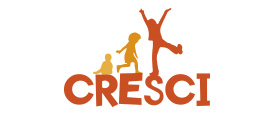
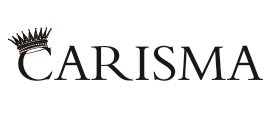
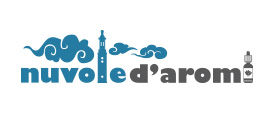




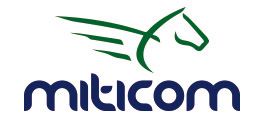

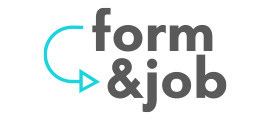
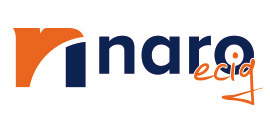




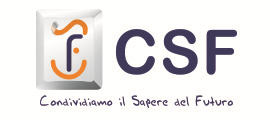
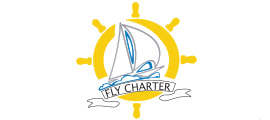





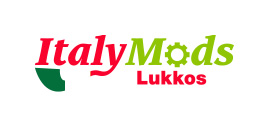
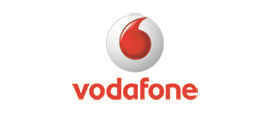




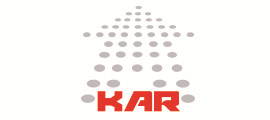
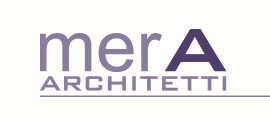

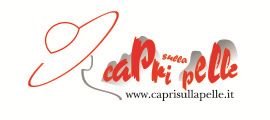





















Comments